8 Types of Mosquitoes in New York
-
Pete Ortiz
- Last updated:

Most people who think of New York might imagine a city without the concern for bugs, let alone mosquitoes. But did you know New York ranks as the fifth-most state for these blood-sucking pests?
In fact, it’s estimated that there are between 40 and 70 species of mosquitoes in the state of New York. While that may seem like a lot, only two are potential threats for feeding on humans. In this article, we’ll discuss them and a few other common types of mosquitoes found in New York.
The 8 Types of Mosquitoes in New York
1. Asian Tiger Mosquito

| Scientific Name | Aedes albopictus |
| Invasion in the U.S.A. | Circa 1980 |
| Length | 0.19 inches |
Aedes albopictus is another common mosquito species that can be found in New York. Commonly referred to as the Asian tiger mosquito, this species can transmit several diseases, including the Zika virus, dengue fever, and chikungunya.
As one of the few mosquito species in New York that feeds on humans, the Asian tiger mosquito is considered to be a public health pest. The name “Asian tiger” implies that this species of mosquito is originally from Asia, and that’s true.
The Asian tiger mosquito didn’t invade the United States until sometime in the 1980s. But how could a species of mosquito from Asia make its way to America? It’s quite simple: The United States purchases tires from Asia, and in those tires were—you guessed it—Asian tiger mosquitoes.
Ever since then, this species of mosquito has been present in the United States, and it has been wreaking havoc on public health.
The Asian tiger mosquito is considered to be one of the most aggressive mosquito species in the world. Not only does it feed on humans, but it will also bite during the day—unlike most other mosquitoes, which are more active at night.
This mosquito is also known to be a particularly efficient vector of disease, meaning that it can transmit diseases to humans more easily than other mosquito species.
The Asian tiger mosquito is small in size, with a black and white striped pattern on its body. The males and females look identical, so it can be difficult to tell them apart. This mosquito typically prefers to lay its eggs in stagnant water, such as in puddles, ponds, or birdbaths.
2. Common House Mosquito
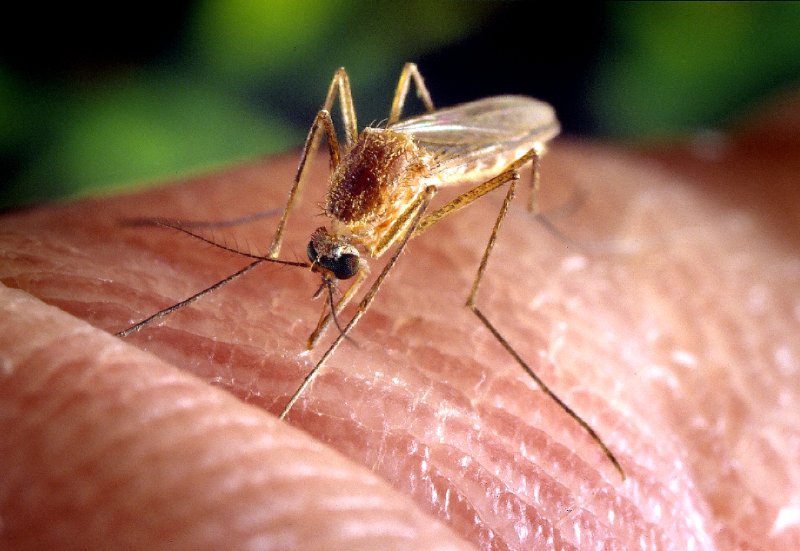
| Scientific Name | Culex pipiens |
| Invasion in the U.S.A. | Circa 1964 |
| Length | 0.15 to 0.19 inches |
Known scientifically as Culex pipiens, the common house mosquito is a typical mosquito species that is often found in urban areas. This mosquito is known to transmit West Nile virus, encephalitis, and other diseases.
The common house mosquito is a small, dark-colored mosquito with white stripes on its legs. The males and females look similar, but the males have feathery antennae that they use to locate mates.
The common house mosquito typically lays its eggs in stagnant water, such as in gutters, storm drains, or puddles. Once the eggs hatch, the larvae will develop into adults in just two weeks. After they become adults, common house mosquitoes will mate, and the cycle will start all over again.
These mosquitoes are most active at night, but they will also bite during the day if given the opportunity. They typically feed on birds, but they will also bite humans if they are hungry.
Culex pipiens’ presence in Europe has been known for the better part of a century, and the species’ first recording dates back to the mid-1700s. The exact date that the common house mosquito infiltrated the United States is estimated to be sometime in the 1960s, likely made possible via shipping containers.
3. Asian Bush Mosquito
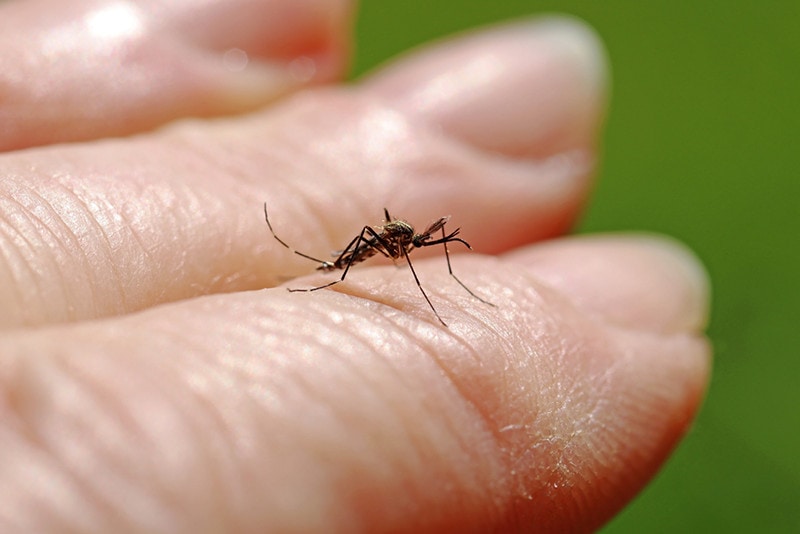
| Scientific Name | Ochlerotatus japonicus |
| Invasion in the U.S.A. | 1998 |
| Length | 0.15 inches |
This type of mosquito is not as common in New York but can be found in the northern and central parts of the state. They are known to carry and transmit viruses like Japanese encephalitis.
The Asian bush mosquito is believed to have invaded New York in the late 1990s through the port of New York.
As with other foreign species, the Asian bush mosquito came to the United States via the transporting of goods from other countries. It’s possible that the Asian bush mosquito was hiding in a shipment of used tires or some other type of cargo that was coming into the country.
These mosquitoes are most active during the daytime, and they will bite both animals and humans. What’s more, the Asian bush mosquito is known to carry the West Nile virus, which can be deadly to humans.
4. Aedes Aegypti Mosquito
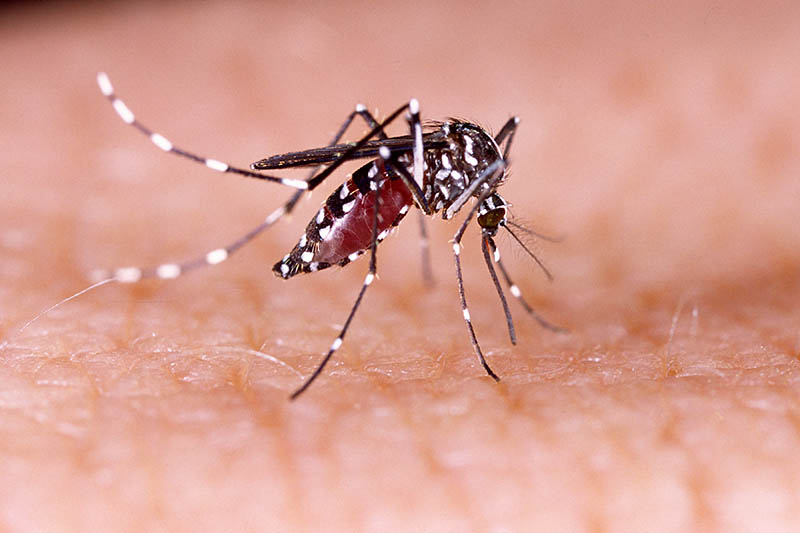
| Scientific Name | Aedes aegypti |
| Invasion in the U.S.A. | Circa 1980 |
| Length | 0.15 inches |
Here is another foreign mosquito that came to the United States via the trade of used tires. This is the species that can carry and transmit the dengue, chikungunya, and Zika viruses. It is a small mosquito with a black and white striped body. The females lay their eggs in standing water, where they hatch and mature into adults within about 10 days.
What makes this species stand out from many other types of mosquitoes is that they bite in the daytime only. It’s true that there are other species that feed during the day, but they also will feed at night if the opportunity arises.
The Aedes aegypti, however, reserves its feeding for daytime only. Given the risk of disease, it’s best to avoid this type of mosquito if you can. You can easily identify it by its white-striped legs.
5. Culex Restuans Mosquito
| Scientific Name | Culex restuans |
| Invasion in the U.S.A. | Early 1900s |
| Length | 0.15 to 0.19 inches |
This is a type of mosquito that is commonly found in the northeastern United States. It generally bites at night, although it has been known to bite during the day, as well. The Culex restuans is a small mosquito with a dark body. The wings of this mosquito are clear with dark markings.
Discovered in 1901, the Culex restuans is a common type of mosquito in the northeastern United States. It is generally found near freshwater sources, such as ponds and lakes. This mosquito is known to bite both humans and animals.
The Culex restuans is a potential vector for several diseases, including West Nile virus, encephalitis, and meningitis.
6. Culex Salinarius Mosquito
| Scientific Name | Culex salinarius |
| Invasion in the U.S.A. | Early 1900s |
| Length | 0.16 inches |
The Culex salinarius species of mosquito is found in salt marshes along the East Coast of the United States. These mosquitoes are known to transmit St. Louis encephalitis and West Nile virus to humans.
Though mostly found in New Jersey, Culex salinarius mosquitoes have also been found in New York, Connecticut, Rhode Island, and Massachusetts.
The species likely made its way into the United States in the early 20th century and has been thriving ever since.
7. Culex Territorialis Mosquito
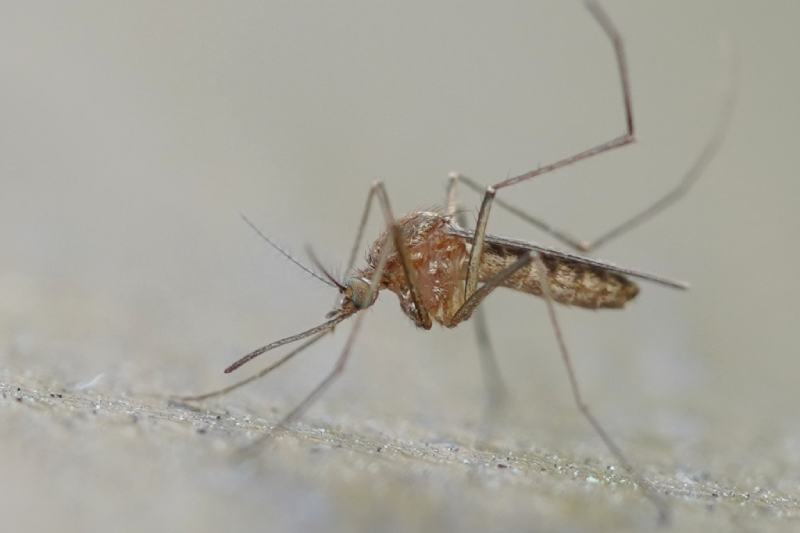
| Scientific Name | Culex territorialis |
| Invasion in the U.S.A. | Circa 1980 |
| Length | 0.19 inches |
Culex territorialis is a species of mosquito that is found in the eastern United States. It is most common in the summer months, and its bite can cause a variety of diseases, including West Nile virus and encephalitis.
While the Culex territorialis isn’t as common as some other species of mosquito, caution needs to be taken when outdoors in areas where this mosquito is known to live. It’s important to wear insect repellent and long-sleeved clothing when possible and to avoid standing water, which is where this mosquito lays its eggs.
8. Anopheles Quadrimaculatus Mosquito

| Scientific Name | Anopheles quadrimaculatus |
| Invasion in the U.S.A. | Circa 1950 |
| Length | 0.15 to 0.19 inches |
The Anopheles quadrimaculatus is a species of mosquito that is commonly found in the northeastern United States and southern Canada. This mosquito is known to transmit the diseases malaria and encephalitis.
Believed to have invaded the United States sometime in the 1950s, the Anopheles quadrimaculatus is now well-established in New York and other northern states.
This species is notable for its scaly wings and dark body. The Anopheles quadrimaculatus is active during the day and night and typically rests in shady areas near its breeding sites.
Mosquito Field Guide
There are more than 3,000 species of mosquitoes, so it can be tough to identify which one is biting you. But with this helpful guide, you can learn to spot the differences and keep these pesky insects at bay.
The first thing to note about mosquitoes is their size. They range from 2 to 10 millimeters in length, with the females typically being larger than the males. Mosquitoes also have long, thin legs and a narrow body. Their wings are clear with dark markings, and they have a proboscis (a long, thin mouthpiece) that they use to pierce skin and suck blood.
Mosquitoes are attracted to warm-blooded animals, so they are often found near humans and other animals. They are most active at dawn and dusk but can bite at any time of day.
Mosquitoes can carry and transmit a number of diseases, including West Nile virus, yellow fever, malaria, encephalitis, and dengue fever. While most mosquito bites will only cause a mild itch, these diseases can be deadly.
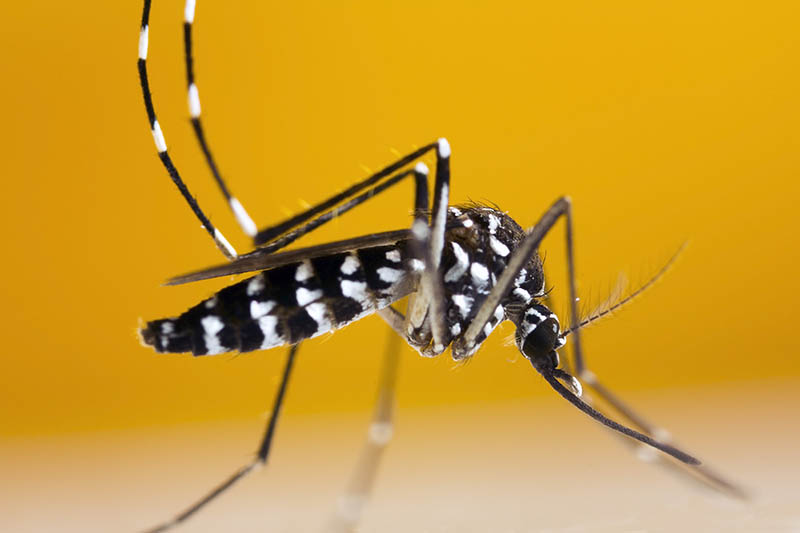
Common Diseases That Mosquitoes Carry
Mosquitoes are known to carry a variety of diseases that can be harmful—and even deadly—to humans.
- Malaria: Malaria is a serious disease caused by a parasite that’s transmitted via the feeding of infected mosquitoes. This disease has flu-like symptoms that include chills and fever. If left untreated, malaria can lead to coma and death.
- West Nile Virus: West Nile virus is a potentially serious illness that can cause fever, headache, body aches, and vomiting. In severe cases, it can lead to encephalitis (inflammation of the brain) or meningitis (inflammation of the spinal cord). The vast majority of people who are infected with West Nile virus will recover completely, but a small minority may experience long-term health problems.
- Dengue Fever: Dengue fever is a viral infection that has symptoms like high fever, severe headache, and muscle and joint pain. It’s important to note that dengue fever can be fatal if not treated promptly, so seek medical attention if you notice any of the above symptoms.
- Chikungunya Fever: Chikungunya fever is a viral disease characterized by fever, joint pain, and rash. Symptoms typically appear 3 to 7 days after being bitten by an infected mosquito. There is no specific treatment for chikungunya fever, and most people recover within a week or two. However, some people may experience joint pain for several months.
- Eastern Equine Encephalitis: Eastern equine encephalitis, or simply EEE, is a virus that can make the victim’s brain swell. It is most commonly found in birds but can be transmitted to humans through mosquito bites. Symptoms of EEE include fever, headache, stiff neck, and confusion. In severe cases, it can lead to coma or death.
- Zika Virus: Zika virus is a mosquito-borne illness that can cause fever, rash, joint pain, and pink eye. It is particularly dangerous to pregnant women, as it can lead to serious birth defects in babies born to infected mothers. There is no cure for Zika virus, nor is there a vaccine to prevent it.
So the best way to protect yourself is to avoid mosquito bites. This is true for all species of mosquitoes, whether you live in New York or elsewhere.
Preventing Bites
Despite their small size, mosquitoes are one of the most dangerous animals in the world. They can carry and transmit a number of deadly diseases, so it’s important to take steps to prevent being bitten, such as:
- Use mosquito repellent. Apply it to your skin and clothing. Repellents with DEET work well.
- Stay inside at dawn and dusk when mosquitoes are most active.
- Use mosquito netting when you sleep outside or in a tent.
- Fix holes in screens on your doors and windows to keep mosquitoes out of your house.
- Get rid of standing water where mosquitoes can lay their eggs. Empty kiddie pools, buckets, and birdbaths weekly. Change the water in pet dishes and planters daily.
- Treat standing water with mosquito larvicide to kill mosquito babies before they grow up to be biting adults.
With these simple tips, you can avoid becoming a victim of mosquito bites. And in doing so, you can significantly lower your risk of the diseases outlined above.
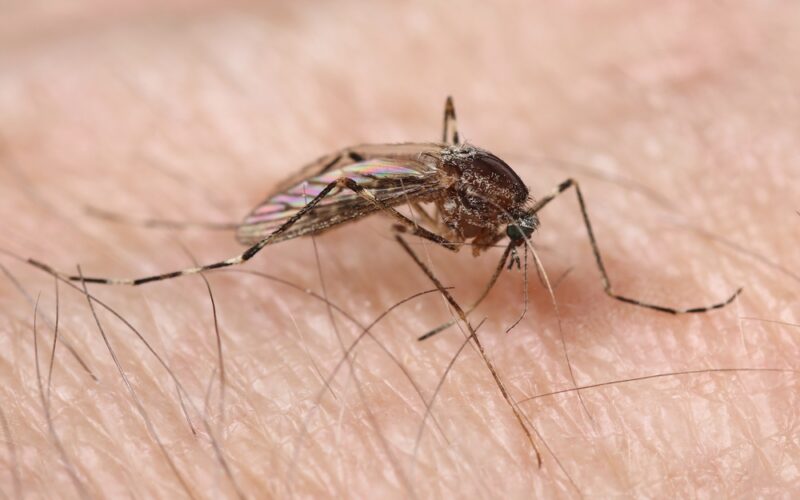
What to Do if You Are Bitten
If you are bitten by a mosquito, clean the area with soap and water. You can also apply an over-the-counter anti-itch cream to help relieve any discomfort. If you develop a fever, rash, or other symptoms after being bitten, see a doctor immediately, as you may have contracted a more serious illness.
Life Cycle of Mosquitoes
Mosquitoes go through four stages in their life cycle: egg, larva, pupa, and adult. The time it takes to complete the cycle varies depending on the species, but most mosquitoes hatch from eggs in less than two weeks.
Once the eggs hatch, the larvae emerge and begin feeding on microorganisms in the water. They go through several molts before pupating, during which time they do not feed. The pupal stage lasts for one to two days before the adult mosquito emerges.
Adult mosquitoes mate soon after emerging from the pupal stage. Females then lay their eggs in stagnant water, where the cycle begins anew.
Most mosquito species only live for a few weeks as adults, but some can live for a few months. Female mosquitoes can lay hundreds of eggs over the course of their lifetime, so it’s important to take steps to prevent them from breeding.
What Attracts Mosquitoes?
Mosquitoes are attracted to warm-blooded animals, so they are often found near humans and other animals. They are most active at dawn and dusk but can bite at any time of day.
Mosquitoes use a combination of carbon dioxide, body heat, and sweat to find their victims. They can detect these cues from up to 100 feet away.
Conclusion
There are a variety of mosquitoes in New York, each with its own unique characteristics. Some of these mosquitoes can be quite harmful to humans, while others are simply nuisances. It is important to be aware of the different types of mosquitoes in your area so that you can take steps to protect yourself from them.
Be sure to employ the tips discussed above so that you can enjoy the outdoors without fear of contracting a potentially serious disease.
- https://www1.nyc.gov/site/doh/about/press/pr2022/west-nile-virus-detected-in-record-number–two-human-cases-reported.page
- https://entnemdept.ufl.edu/creatures/aquatic/culex_pipiens.html
- https://www.mosquitomagnet.com/articles/when-are-mosquitoes-most-active
- https://www.health.ny.gov/publications/2731/
- https://entnemdept.ufl.edu/creatures/aquatic/Anopheles_quadrimaculatus.htm
- https://www.cdc.gov/easternequineencephalitis/index.html
Featured Image Credit: mikadago, Pixabay
Contents


